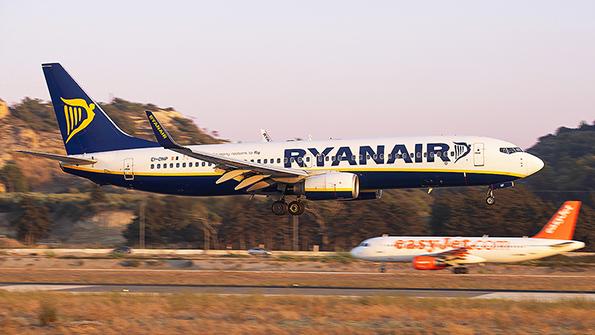ANALYSIS: European Carriers Hunker Down For Rough Winter Season

The summer’s cautious hopes of recovery are well and truly in the past for Europe’s airlines: With COVID-19 restrictions tightening in many countries, carriers are facing an even tougher winter than they feared at the height of the coronavirus crisis earlier this year.
A tentative recovery in demand for short-haul flights through summer has gone into reverse. On the long-haul side, demand remains at a fraction of pre-pandemic levels, with business travel all but wiped out.
In Europe, weeks of lobbying for a more coordinated system of widespread COVID-19 testing to replace the fragmented and frequently changing travel restrictions that have hampered recovery efforts seemed to achieve some small progress when a Europe-wide harmonized “traffic light” system was approved by European Union member states. The system is based on a simple map of regional infection data analyzed by the European Center for Disease Prevention and Control and put forward by the European Commission.
But European airlines argued it did not go nearly far enough.
Besides, with infection rates now spiralling in major European markets and new lockdowns being imposed or considered, the idea of providing clarity and predictability for airlines and would-be travelers is definitely too little, airlines say, and may have come too late.
European airlines had been arguing that inconsistent quarantine and testing requirements between European countries put off passengers who would otherwise have been keen to fly, but that small step toward more clarity will not have any effect if travelers are simply banned from non-essential travel.
Lower traffic forecast
According to the latest weekly data released by Eurocontrol, the average number of daily flights fell 3.4% in the week to Oct. 25 compared with a week earlier. That left traffic at 42.9% of 2019 levels.
Eurocontrol has already cut its traffic forecast for the rest of 2020, warning in September in an update to its Current Status Scenario, which sets out estimates to February 2021, that the region’s airlines, airports and ANSPs could now see a loss of revenue of €140 billion ($166 billion) for 2020, up from the €110 billion loss predicted in April, with a total number of flights in Europe down 55% or 6 million flights compared with 2019, a further 1 million reduction in flights compared with what it had previously predicted
Eurocontrol director general Eamonn Brennan warned Oct. 24 that its revised scenario could still be too optimistic because airlines continue to cut back their schedules in the face of growing uncertainty. Major European airlines have been pre-empting the grim winter with curtailed schedules.
UK LCC easyJet, which warned Oct. 8 that it will suffer its first-ever full-year loss of up to £834 million ($1.09 billion), has already set out plans to fly only about a quarter of its pre-pandemic planned capacity in October, November and December. “Customers are booking at a very late stage, and visibility remains limited,” the airline said.
Irish LCC Ryanair said in October it was reducing its winter capacity after the Irish government reimposed a six-week national lockdown set to last until Dec. 1. Ryanair now plans to operate at around 40% of its 2019 levels, compared with a previous estimate of 60%, and will close its Cork, Shannon and Toulouse bases for the winter.
Ryanair expects to maintain up to 65% of its winter route network, but with reduced frequencies.
International Airlines Group (IAG), the parent company of British Airways, Iberia, Aer Lingus, Vueling and Level, said Oct. 22 that it would reduce its planned capacity for the fourth quarter of the year to no more than 30% of 2019 levels, down from an earlier estimate of 40%.
“Recent overall bookings have not developed as previously expected due to additional measures implemented by many European governments in response to a second wave of COVID-19 infections, including an increase in local lockdowns and extension of quarantine requirements to travelers from an increasing number of countries,” IAG said.
At the same time, initiatives designed to replace quarantine periods and increase customer confidence to book and travel, such as pre-departure testing and air corridor arrangements, have not been adopted by governments as quickly as anticipated.
Lufthansa Group is even more cautious, saying Oct. 20 that it was revising its capacity planning down to a maximum of 25% of 2019 levels, with European demand shrinking and no long-haul restart in sight.
Over the summer, the German-based group had been hoping to operate as much as 60% of pre-pandemic capacity by the end of the year, a target it has revised downward repeatedly because of travel restrictions and rising infection rates.
“We think, given the levels of travel restrictions and unlikely material return of the business traveler, airlines will continue to reduce fourth quarter capacity,” wrote UBS airlines analyst Jarrod Castle in an Oct. 21 research note, in which he pointed to a “tougher trading environment” in the winter months.



